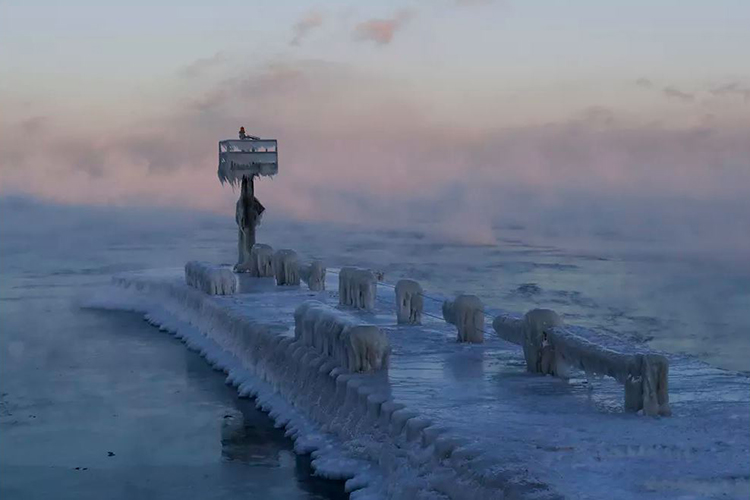Prof. Denning answers questions about weird winter weather phenomena
Editor’s note: Extreme cold weather can produce unusual phenomena, from so-called sea smoke to slushy ocean waves. As atmospheric scientist Scott Denning explains, these striking events are caused mainly by the behavior of water at very cold temperatures.
Why do lake and ocean waters appear to steam during cold snaps?
There are three phases, or states, of water: solid ice, liquid water and gaseous water vapor. Even in extremely cold weather, liquid water can’t be colder than the freezing point – about 32 degrees Fahrenheit – so the surface of the ocean is much warmer than the air above it.
A lot of water evaporates from the warmer ocean into the colder dry air above. As soon as this invisible gas rises even just a little bit above the relatively warm water, it hits air that is much colder and can’t hold much vapor, so the vapor condenses into microscopic droplets of liquid water in the air.
Some people call the wispy clouds caused by condensation just above the winter ocean or lakes “sea smoke.” That’s a better term than steam. Real steam is very hot water vapor – that is, water in its gas phase, which is invisible.
Read the full article, “Steaming lakes and thundersnow: 4 questions answered about weird winter weather,” from The Conversation.
Photo at top: “Sea smoke” on Lake Michigan at 39th Street Harbor in Chicago, Jan. 30, 2019. AP Photo/Nam Y. Huh



